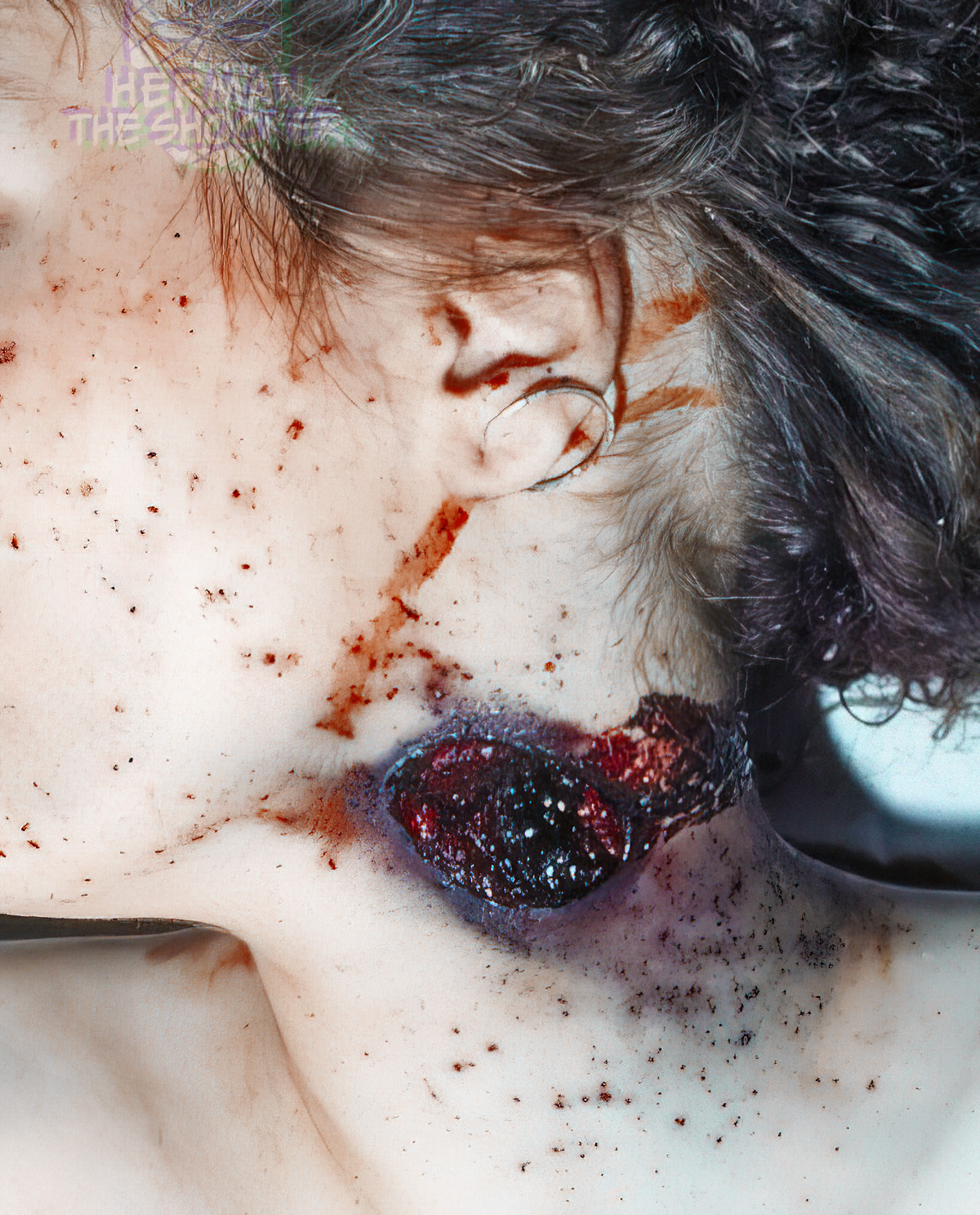This individual has a shotgun shot wound. A large central defect is surrounded by smaller shotgun shot wounds in the skin, no further info.
The head is the most common location for a suicidal shotgun wound (74%), followed by the chest (20%) and then the abdomen (6%). In head wounds, the most common location was intraoral (50%), followed by under the chin (19%); side of head, including parietal and temporal wounds (15%); and the face, including the forehead (13%).
In the case of homicides, 59% occurred at a distant range, 21% occurred at an inter-mediate range, and 8% were at contact range. There was not a significant most common location for homicidal shotgun wounds, though the head, chest, and multiple locations all occurred about 25% of the time, representing the three most common locations. The most common locations of wounds to the head were face, including forehead (37%), and the side of the head, including parietal and temporal wounds (23%).
Shotguns differ from rifles and handguns in construction, ammunition, ballistics, and use. Rifles and handguns fire a single projectile down a rifled barrel. Shotguns have a smooth bore. Although they can fire a single projectile, they are usually employed to fire multiple pellets. Rifled shotgun barrels, intended for use with slugs, are available. Shotguns may be autoloaders, pump (slide action), over/under, side-by-side, bolt action, or single shot. Some shotguns usually intended for military and/or police use convert from semiautomatic to pump action and back as the user desires.
Latest posts








